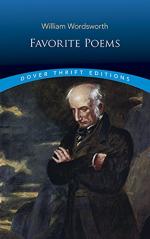
|
| Name: _________________________ | Period: ___________________ |
This test consists of 15 multiple choice questions and 5 short answer questions.
Multiple Choice Questions
1. To whom is the apostrophe in lines 57-59 addressed?
(a) The mountains.
(b) The river.
(c) The hermit.
(d) The woods.
2. Which technique is employed in line 64, "While here I stand, not only with the sense"?
(a) Platitude.
(b) Inversion.
(c) Isocolon.
(d) Paraprosdokian.
3. What idea is conveyed by the details listed toward the end of the fourth verse paragraph?
(a) It is natural for people to get more philosophical and less emotional as they age.
(b) Although essentially amoral, nature can still teach humans important lessons.
(c) Nature is far more mysterious than most people understand.
(d) All things are unified and guided by a single spiritual force.
4. How does the speaker characterize the daytime activities of humans in the city?
(a) They are pointless.
(b) They are reckless.
(c) They are panicked.
(d) They are dangerous.
5. What technique is employed when the speaker calls the view "food" for future years (line 66)?
(a) Verbal irony.
(b) Euphemism.
(c) Metaphor.
(d) Symbolism.
6. In line 75, what word does the speaker use to characterize his boyhood pleasures?
(a) "Coarser."
(b) "Heedless."
(c) "Foolish."
(d) "Sweeter."
7. Which sound device is used in line 56, "Have hung upon the beatings of my heart"?
(a) Sibilance.
(b) Alliteration.
(c) Cacophony.
(d) Elision.
8. What is the primary rhetorical function of the alliteration in line 65, "Of present pleasure, but with pleasing thoughts"?
(a) It distinguishes between the poet's senses and thoughts.
(b) It connects the present to the future.
(c) It stresses the speaker's serene state of mind.
(d) It creates a rhythmic tone that mimics footsteps.
9. Which is the best definition of the word "vain" in the context of line 52?
(a) Conceited, proud.
(b) Foolish, worthless.
(c) Changeable, wavering.
(d) Unsuccessful, doomed to failure.
10. What "still sad music" does the speaker hear when he looks at the landscape (93)?
(a) The "still sad music of the spheres."
(b) The "still sad music of humanity."
(c) The "still sad music of philosophy."
(d) The "still sad music of the past."
11. What is the best definition of "impels" in the context of line 102?
(a) To force compliance.
(b) To limit or define.
(c) To drive or motivate action.
(d) To inspire and improve.
12. What is the "remoter charm" that the speaker mentions in line 83?
(a) The bittersweet feeling of nostalgia.
(b) The pleasure of philosophical thought.
(c) The excitement of discovery.
(d) The attraction of far-away places.
13. What is the best definition of "cataract" in the context of line 78?
(a) Clouded vision.
(b) Pounding heart.
(c) Narrowing canyon.
(d) Rushing water.
14. How did the speaker primarily relate to nature when he was younger?
(a) Through his mind.
(b) Through his spirit.
(c) Through his actions.
(d) Through his senses.
15. What technique is employed when the speaker says he cannot "paint" the person he used to be?
(a) Symbolism.
(b) Metonymy.
(c) Metaphor.
(d) Synecdoche.
Short Answer Questions
1. Which technique is used in the line 70 phrase "I bounded o'er the mountains"?
2. What technique is used in lines 100-101: "And the round ocean and the living air,/ And the blue sky, and in the mind of man"?
3. What is emphasized by the unusual word order in line 78's "What then I was"?
4. What techniques are evidence in line 88's phrase "nor mourn nor murmur"?
5. What is a "roe" (line 69)?
|
This section contains 529 words (approx. 2 pages at 300 words per page) |

|




